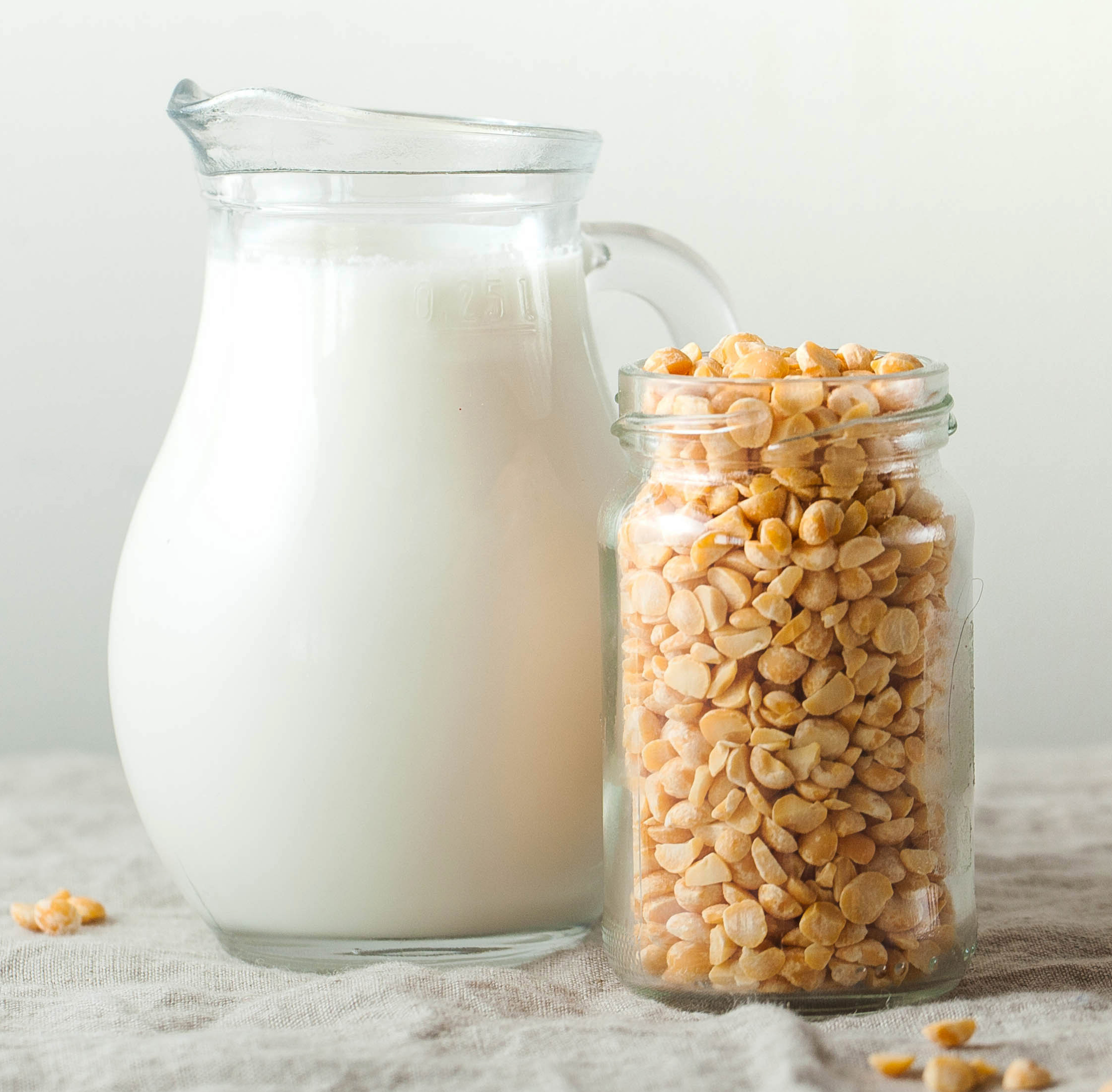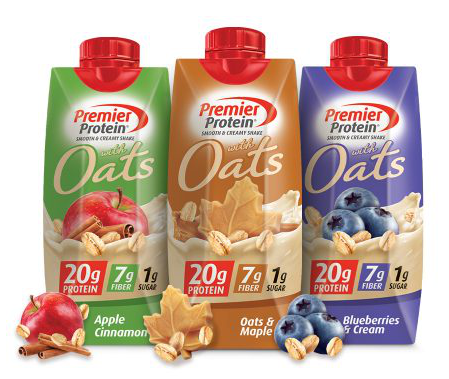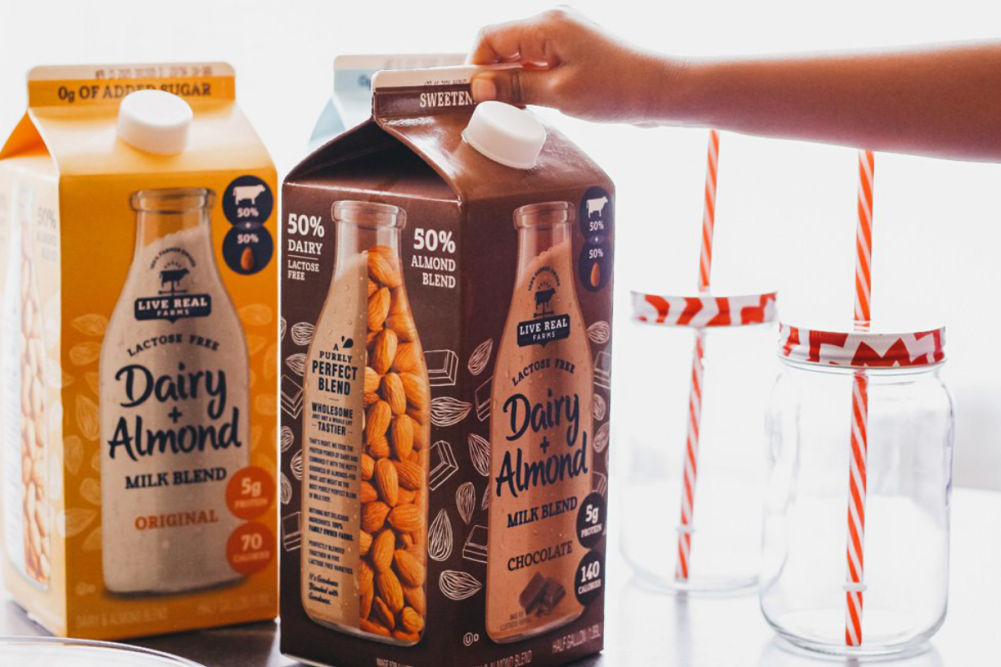CHICAGO — Americans continue to prioritize protein, according to the 2020 Food & Health Survey from the International Food Information Council Foundation, Washington. Nearly 40% said they are trying to consume more plant protein, while 30% are trying to consume more animal protein, with the latter a significant increase from the past year.
One out of four respondents said they were eating more protein from plant sources as well as more plant-based dairy. Those following a specific diet or eating pattern, such as ketogenic, low-carbohydrate or flexitarian, are driving the numbers.
Beverages — everything from isotonics to meal replacements to milk-type drinks — are being formulated to deliver a potent punch of protein. But not all proteins are created equal, which is why formulators often blend them: plant with other plant proteins, whey with casein (both are dairy), or more recently, dairy and plant.
“The blend used depends on the desired taste, texture, nutrition and function of the finished beverage,” said Lisa Bradford, senior scientist, Archer Daniels Midland Co, Chicago. “Blends may include soy, oats, nut butters, peas, ancient grains, dairy and beans.”
Jeff Casper, director of research and applications, Merit Functional Foods, Winnipeg, Man., emphasized the importance of complete protein. A protein is considered “nutritionally complete” or “whole” when it contains the nine amino acids essential in the human diet in a ratio that matches the requirements of the body.
“While many animal and dairy-based protein sources are nutritionally complete, most plant-based protein ingredients struggle to attain this status,” Mr. Casper said. “Our individual pea and canola ingredients provide high digestibility and complementary amino acid profiles, which is why together they open opportunities to boost nutritional value.”
Jacqueline Finegan, business development manager – proteins, Kerry North America, Beloit, Wis., said, “By blending incomplete plant proteins — such as complementary pea and rice — it is possible to deliver a complete protein.”
Another consideration is the quality of the protein. Proteins not only vary in their individual amino acid composition, but also their level of amino acid bioactivity, among other attributes. Products that carry a “good source of protein” claim must provide more than 10% of the Daily Value (DV) of protein per serving, while those making an “excellent source of protein” claim must contain more than 20% DV. That does not simply translate to 5 grams and 10 grams of protein per serving. It’s 5 grams and 10 grams of “high-quality” protein.

That’s because the Percent Daily Value for protein is determined using the Protein Digestibility Corrected Amino Acid Score (PDCAAS), which is an adjustment for the quality of the protein. It is based on the types and amounts of amino acids in the food as well as the overall digestibility. The PDCAAS values range from 0.0 to 1.0, where values are truncated to a maximum score of 1.00, which cow’s milk, casein, whey, eggs and soy protein all possess.
Most plant protein sources have lower values. Thus, a yogurt beverage containing 10 grams of milk protein may make an “excellent source of protein” claim. A cultured vegan product with 10 grams of protein from pulses or grains most likely only qualifies for a “good source of protein” claim. When making or implying any protein content claim, the US Food and Drug Administration requires the inclusion of the % DV to support the protein claim.
Kerry offers a pea and rice blend that is optimized for digestibility. It is equivalent in terms of quality score (PDCAAS=1) to the gold standard proteins, such as whey or soy.
“Pea protein has a mild flavor profile and offers functional benefits,” said Christine Addington, senior dairy technical service specialist, Cargill, Minneapolis. “It has become the go-to choice for many beverage brands and is especially popular in dairy-plant blends. It is highly soluble, provides good emulsification and has a neutral taste profile.”
While not a complete protein, pea protein has a high PDCAAS score (0.8). It readily blends with other sources to make protein claims.
“Chickpea, fava bean and oat proteins are also popping up in beverage applications,” Ms. Addington said. “They are sometimes functionally constrained by solubility limitations or nutritionally by lower protein quality scores and by flavor.”
Rate of digestion is another reason to blend proteins. This is particularly true in beverages designed to refuel or satiate.
“A blend of whey and casein provides a consistent digestion of amino acids over a longer period of time,” Ms. Finegan said. “Whey is digested more quickly, while casein digestion occurs slowly, with the result that they combine beautifully together.”
A growing trend is the development of hybrid protein products that combine both dairy and plant proteins.
“Products that combine both animal- and plant-based proteins are ideal for targeting these flexitarian consumers and can be a good alternative for those still using dairy products but perhaps more critical of the perceived taste and texture of plant protein products, in comparison to vegan consumers,” Ms. Finegan said. “Hybrid protein blends enable flexitarians to ‘test drive’ plant proteins, delivering the best of both worlds in an important bridging ingredient.”
Hybrid innovations
With a growing number of consumers seeking more options in their beverage choices, especially when it comes to milk, Dairy Farmers of America Inc. (DFA), Kansas City, Kan., decided to go down the protein blend road. In late 2019, the cooperative developed Dairy Plus Milk Blends, a refrigerated beverage combining lactose-free dairy milk with almonds or oats. There are sweetened and unsweetened options, as well as a chocolate variant.
Since, Premier Nutrition Company, LLC, Kings Mountain, NC, has expanded its shelf-stable nutritional beverage portfolio with Smooth and Creamy Shake with Oats. The 11-oz single-serve beverage comes in apple cinnamon, blueberry cream and oat maple flavors.
The ingredient legend identifies three sources of protein — milk protein concentrate, oats and calcium caseinate — that together deliver a total of 20 grams of protein per serving. While the beverage provides another example of combining dairy and plant proteins, it competes in the functional nutrition space rather than the dairy department.
That’s where DFA’s product may be found. It made its debut in the Midwest. Learnings over the past year now have the brand pivoting with its messaging and target consumer.
“There’s a lot of challenges when you bring an entirely new product concept to market,” said Eric Loper, vice president and general manager of Live Real Farms, St. Paul, Minn., a brand owned and managed by DFA. “Educating the consumer is key.”
Mr. Loper said the product was slightly ahead of the now-booming consumer trend of flexitarianism. Educating the flexitarian on how the beverage provides the essential nutrition — namely calcium and essential amino acids — found in dairy with the health benefits of plant-based foods is critical.
“While a relatively small number of consumers follow a strict vegan diet, many flexitarian consumers are looking for easy ways to up their intake of plant proteins and maximize the nutritional impact of their beverage choices,” Ms. Addington said. “Dairy proteins are more soluble than plant proteins, which means you can create beverages with much higher protein levels compared to those that rely on plants alone.
“At the same time, by incorporating plant protein into the formula, brands can deliver products with fewer calories and less saturated fat versus their dairy-only counterparts. Equally important, it’s much easier to meet consumers sensory expectations in these plant-forward products. By retaining a portion of the dairy proteins and fats in the formula, hybrid products result in a cleaner, creamier mouthfeel.”
The diversity of plant proteins provides enormous opportunity for innovation." — Dina Fernandez, Archer Daniels Midland Co.
Sampling is key to purchase, Mr. Loper said. And with the pandemic preventing in-store sampling and many consumers reluctant to try anything new during uncertain times, the first year was even more challenging than expected for DFA’s new brand.
“The product provides a unique taste experience, one that scores extremely high in taste testing,” Mr. Loper said. “We also learned that many consumers are concerned with losing the nutrition of dairy by switching completely over to plant-based. In fact, 39% of households purchase both dairy milk and plant-based alternatives, while 26% of individuals in the US consume both.
“We learned we have to focus on stores with decent foot traffic, because over 50% of awareness is driven off shelf. The Dairy Plus Milk Blends serve as a midpoint for those consumers wanting to migrate from dairy to plant-based but are disappointed in a solely plant-based beverage.”
The Dairy Plus Milk Blends entered the Northeast market in September and are gaining distribution.
“Dual-shopper households — those that purchase both dairy- and plant-based beverages — are our target customer,” Mr. Loper said. “These consumers are mostly concentrated on the coasts and lesser so in the middle of the US.”
Overcoming technical challenges
In addition to encouraging trial with a target consumer, there are other challenges protein beverage innovators must address. Cost, functionality, label claims, stability and taste are issues. Because proteins have varied sensory properties, blends typically allow for a greater addition level, as they balance each other.
“Using multiple sources of proteins can help you achieve successful formulations and potentially satisfy all of these key areas,” said Robert Wansor, principal technologist, Ingredion Inc., Westchester, Ill. “It is increasingly common to blend soy, pea, nut-based, oat, chia and more in order to meet your beverage needs.
“A challenge with solely using plant-based proteins is there are usually sensory limitations. Plant-based proteins are known for providing off-notes, some more so than others depending on the source.”
Grace Arney, beverage associate application scientist, DuPont Nutrition & Biosciences, a business of DuPont, St. Louis, said, “Some proteins may provide mouthfeel or viscosity challenges. Blending proteins high in viscosity with proteins lower in viscosity can help round out the mouthfeel of the beverage.”
Even within a category of proteins, sensory properties may vary. DuPont, for example, offers a range of soy proteins that vary from thick to thin mouthfeels. Some have added lecithin to reduce dusting, which is helpful when working with proteins at large scale.

Acidic beverages (below pH 4.6) present unique challenges, as proteins tend to precipitate out of solution, resulting in a chalky, gritty taste and mouthfeel. Technologies have been developed to overcome the hurdle.
“Soy and dairy blended fermented beverages may need a special grade of soy protein, which is acid tolerant,” Ms. Arney said. “The stabilization of plant-based beverages is different from their dairy counterparts, and different still when it is a blend of the two.
“Some stabilizers, such as certain carrageenans, react specifically with dairy proteins and do not react the same way with plant proteins,” Ms. Arney said. “While other stabilizers, such as gellan gum, are very well suited to plant applications, but may require special considerations and grades when used with dairy proteins.”
Kerry also offers a blend of pea and sunflower protein. Pea protein has a lower viscosity in solution than sunflower, so together they complement each other and produce a desirable mouthfeel.
Blending proteins often helps overcome the sensory flaws associated with using one single plant protein. This issue generally does not arise with dairy proteins, which are neutral in flavor and color.
“Plant proteins do not taste like dairy proteins,” Ms. Arney said. “In general, plant proteins are darker in color and have more vegetable flavors to them compared to their dairy counterpart.
“The flavor industry has put out many flavor masking agents, and new ones are being developed all the time. Finding the right flavor masker may be difficult, but it is worth the time to be able to create a clean base to build your beverage around.”
Dina Fernandez, global director – protein nutrition solutions for ADM, said, “The diversity of plant proteins provides enormous opportunity for innovation. Blending multiple plant proteins or plant and dairy proteins into ready-to-drink beverages is an on-trend, value-added solution that consumers are willing to pay a premium for.”





